Delaminating Notes: The greening of our (multicoloured) journals
As creatives, we love to experiment with different ways to document and discover. Our journal is one of those experiments – iterated to perfection over the last 15 years. Many different formats have been tried, tested, and used daily by our team. We’ve found that stepping away from the computer to put pen to paper and brainstorm or sketch ideas is an invaluable part of our daily routine.
As such, our Locus Research-designed journal has a good history behind it. In 2010, we designed a monthly, dated, A5 journal, whose main purpose was timekeeping and project notes, with a daily planner and some sketching space. One year we even designed a canvas journal cover for a Christmas gift for our clients.
The issue arose when we started using other notebooks for longer note taking at conferences, printer paper or templates for sketching, and an online system for time keeping — the LR journal nearly became redundant. However, we still wanted something of our own, so we went back to the drawing board and the journal in its present form was born.
In 2014, we scaled up to A4 size, kept the space for weekly planning, added a task list, brought in a stack of journaling and sketching pages, and added a wire binding for easy note-taking on the go. This format evolved into a date-generic journal, very similar to what we use today, with a wire-bound spine, solid-colour cover, and some handy references at the start. We even added some space at the back for recording a quote of the week, something our founder Tim became well known for.
We also created a field-sized version in mid-2017; a journal that could fit in your pocket and be less-obtrusive when doing field research. We couldn’t let go of our big version though, as it is still nice for longer note taking and desktop research. At Dan’s request, we brought in a dot-grid version of the sketching pages, as well as producing the traditional line-grid. We rounded the corners to maintain integrity when being pulled in and out of a work bag. And finally, a quick guide to bullet journaling means we’ve left no stone unturned in our quest for the perfect journal.
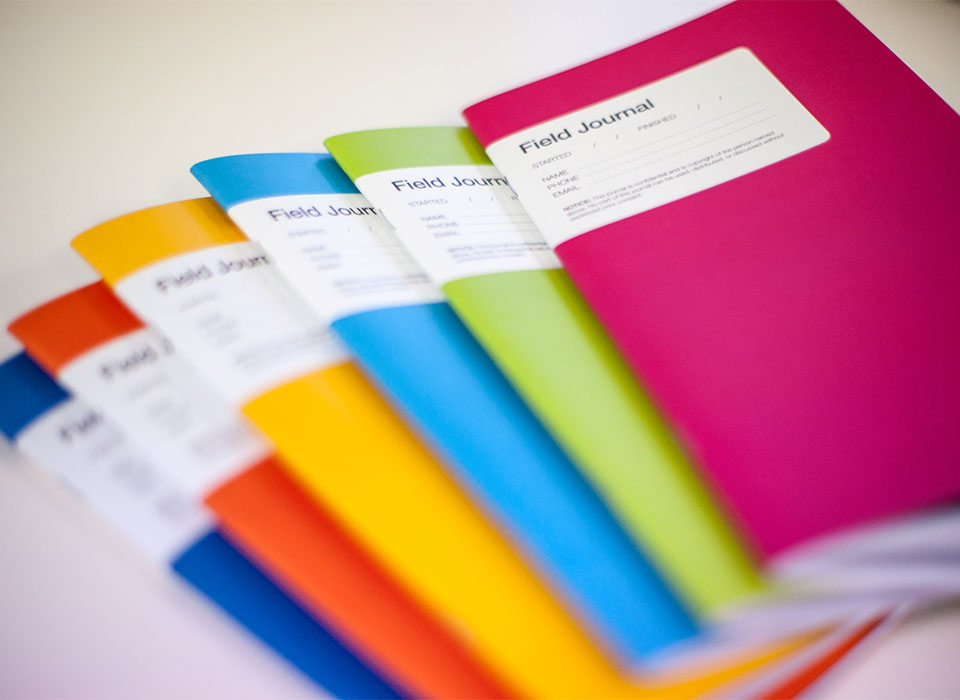
The new (but still laminated) Field Journals.
But there was still one issue. In effort to create a durable, long-lasting journal, we had printed the block colours and then layered the cover of the notebooks with a matte laminate. While this made the covers waterproof and tearproof — and even snow proof, as Caroline discovered while travelling through London in the springtime — when we did some research into the end of our journal’s life, we were not happy with the results. The printer has ensured us that their off-cuts of the material are recycled into backing boards; however, if the journal was placed in household recycling bin it would end up in the landfill. It is, after all, plastic stuck to paper, and mixed materials are incredibly difficult, if not impossible, to recycle.
So the obvious next stage in our journal’s evolution was to source a more sustainable cover. Printed colour without laminate wasn’t really an option — digitally printed toner comes out shiny, often shows fingerprints, and scratches easily. Offset printing gives a much nicer finish, but our numbers simply weren’t high enough to justify the cost. Luckily, our printers came to the rescue! Their paper companies supply some beautiful coloured, totally recyclable paper stocks and we were lucky to find ones that reasonably match our brand colours.
To make up for using a thinner cover, we beefed up the backing boards so the journals don’t get floppy if you’re writing while standing up. The thinner stock even suited our staple-bound Field Journals better, as they’re less likely to fall open (or ‘peacock’ as Mike calls it) and show off their sometimes confidential inside details. Printing on this stock is super sharp and even better looking than its predecessor.
But we didn’t stop there. We wanted to get as green as possible at both ends of the life-cycle, so shifted from a pure white and totally not recycled stock to a paper that is made of 100% post-consumer waste. It’s also FSC® certified and process chlorine free. By using Cocoon Offset paper rather than a non-recycled paper for a short run of just 120 journals, the environmental impact was reduced by:
- 59 kg of wood
- 1,066 litres of water
- 62 kWh of energy
- 36 kg of landfill
- 5 kg CO2 and greenhouse gases
- 53 km travel in the average European car
- For more information, visit https://goo.gl/tA2Mnz
While it might not be as snow-proof as the previous editions, we are much more comfortable knowing that at the end of its use, this journal can go on to have a second life and be less likely to end up in the landfill.
And good news — we’re keen to share our journals with you! Watch this space for your chance to grab a journal or two, in whichever colour, size, or grid style you prefer.
Journals in use, at the desk and on-the-go, by the Locus team.
Want to read more on creativity, design, product development and innovation? Go to our Six Lenses Blog.
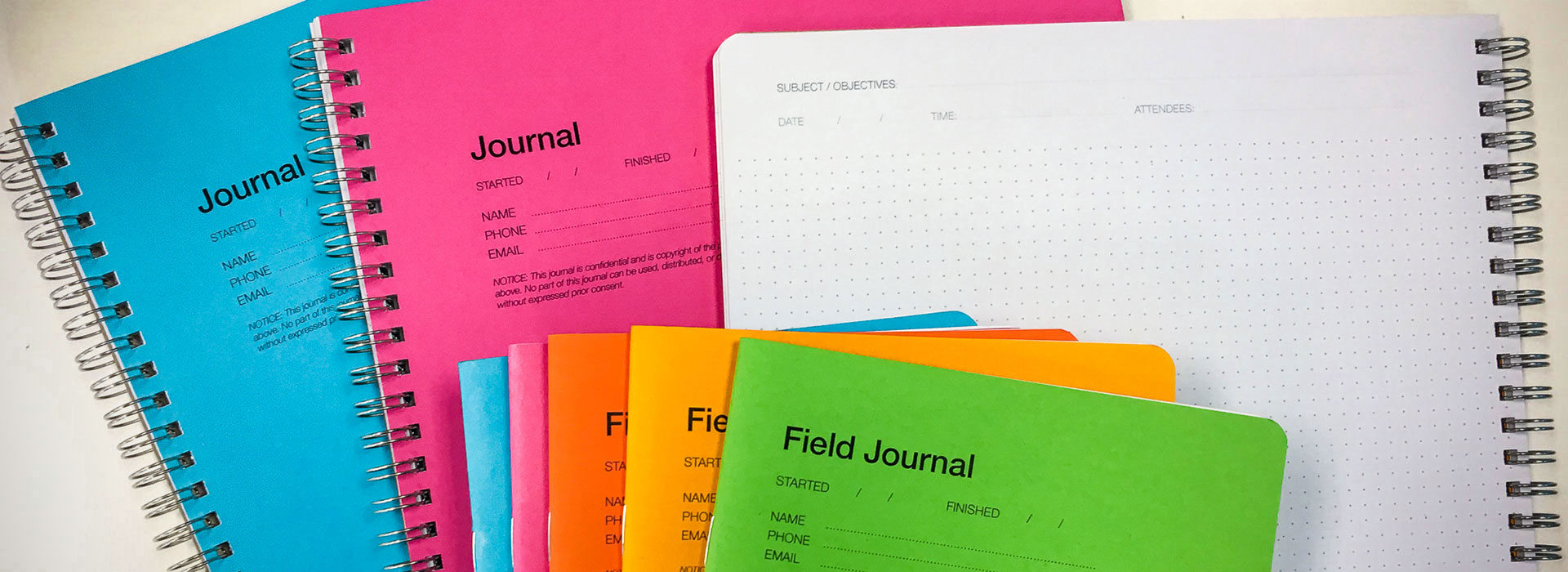





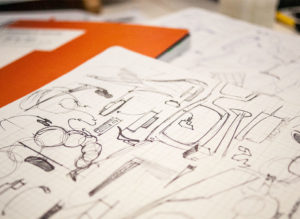
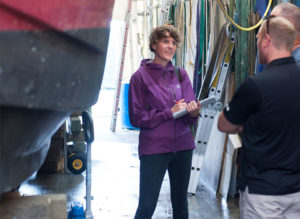



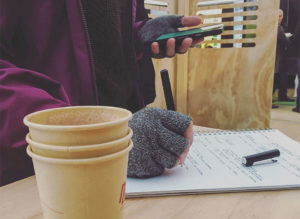
Comments